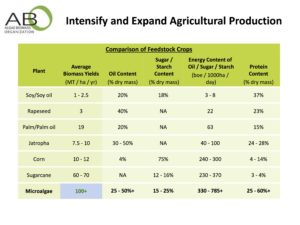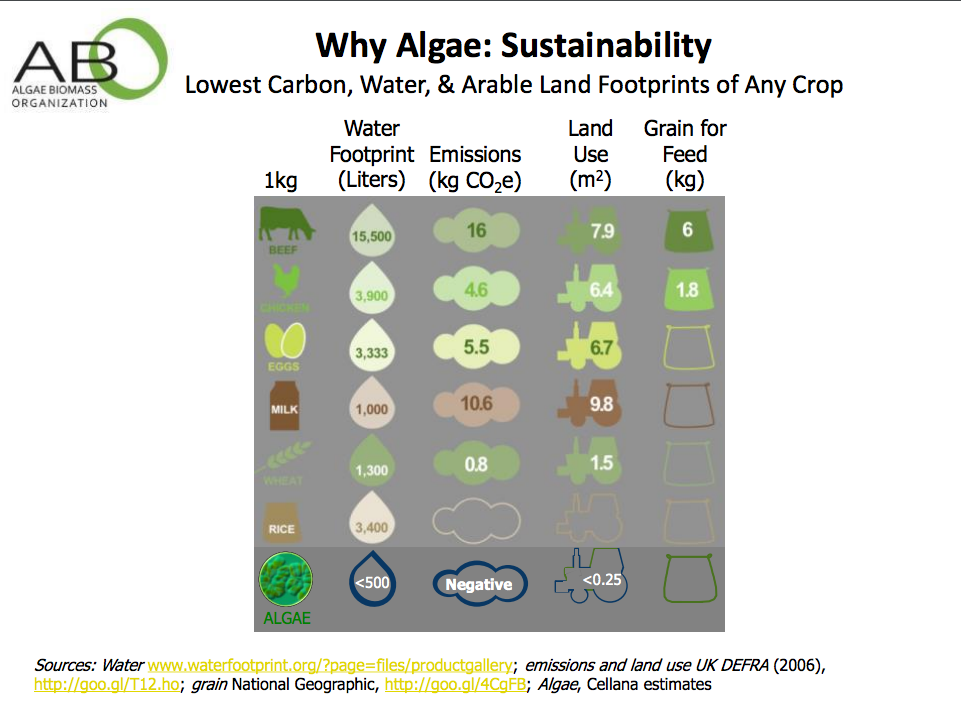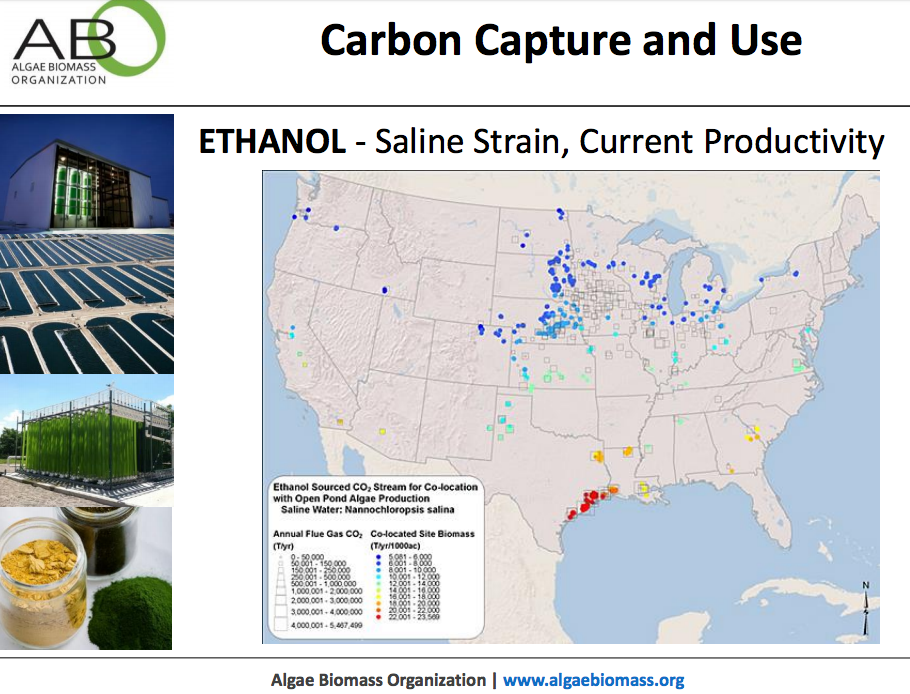Last month ABO’s executive director Matt Carr briefed attendees of the Advanced Bioeconomy Leadership Conference in Washington, DC on the potential that algae has to become a leading crop of the future.
The potential of algae goes far beyond biofuels, with a number of efforts underway to put algae in everything from food to soil amendments to water treatment systems.
Among the details in Matt’s presentation was this slide showing that algae’s average biomass yields far exceed many traditional crops:

The productivity of algae farming is clearly impressive, but so is the sustainability profile. Since algae can grow on marginal lands, and in water that is unsuitable for traditional farming, the impact of algae cultivation on the environment is much lower than with many other crops.
And on the question of carbon emissions, algae farming can’t be beat when it comes to fighting climate change:

In fact, some recent research has shown that large-scale algae cultivation could even play role in reversing climate change:

Algae grow extremely fast, and need enormous quantities of carbon dioxide for photosynthesis. This makes them ideally suited to consume the carbon dioxide emitted from power plants or other processes before the gas escapes into the atmosphere. It also means that areas with large carbon dioxide supplies might be well-suited to grow algae.
The distribution of coal-fired power plants and ethanol production facilities in the US indicates what regions might have the largest quantities of CO2 available for local algae production:

You will notice one state with particularly good carbon resources for algae production: Texas. In fact, the entire Gulf Coast offers some ideal conditions for algae farmers across a number of variables: carbon supplies, climate and water.
As the leaders of the algae industry gather near Houston this year for the 2018 Algae Biomass Summit this regional potential will be a big topic of discussion.
These are just a few of the dimensions of algae cultivation that point to a future of more algae farming in the United States. As the technology advances and more products based on algae become available, ABO expects that future maps of the United States will show an entirely new kind of agriculture providing jobs, energy, food and other products more sustainably then ever before.
